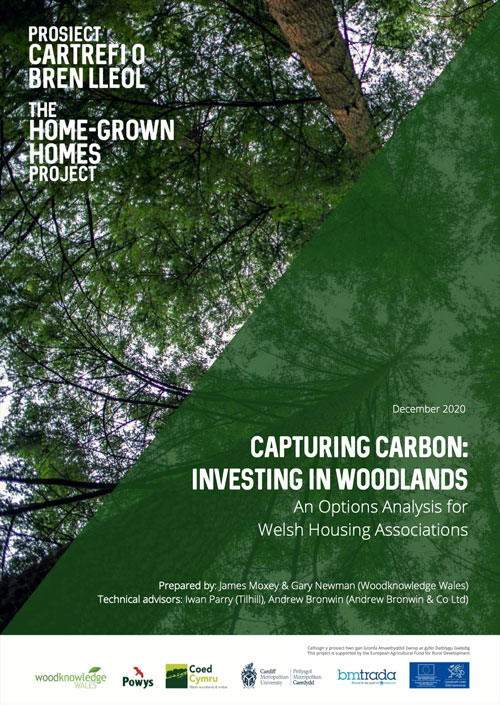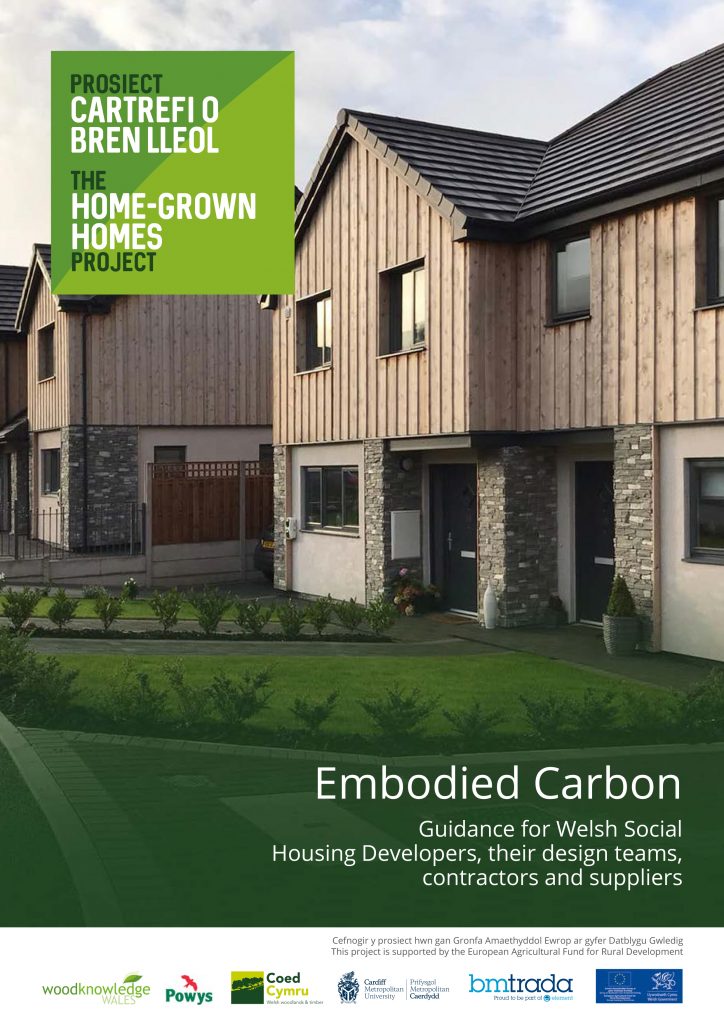
NRW’s Timber Sales & Marketing Plan (2021-2026) can offer opportunities for the small timber processing community in Wales. The purpose of this paper is to interpret the Plan and its implications for small sawmillers. This will create a solid foundation for exploring the means by which small processors may be able access timber grown on the Welsh Government Woodland Estate in the future as well as highlight opportunities for future activities and interventions.
DOWNLOAD BRIEFING
Procurement
Unlocking the full potential of offsite manufactured timber housing in Wales: The Challenge of timber price volatility

Unprecedented price volatility of timber is constraining the development of the timber frame manufacturing sector. This threatens the delivery of Welsh Government’s affordable housing, MMC and zero carbon strategies. The purpose of this paper is to highlight issues of concern and offer first ideas to develop potential solutions.
DOWNLOAD BRIEFING
Carbon Storage Contract

The future building stock is the most effective and most immediate opportunity for carbon reduction and long-term carbon storage. By creating a new economic model for monetising the carbon reduction and storage capacity of the future building stock, the use and specification of low-carbon and carbon-storing materials could be incentivised.
Woodknowledge Wales have been working with providers of a voluntary carbon marketplace that pairs business buyers with building projects that demonstrate meaningful carbon reduction and carbon storage (30+ years). To demonstrate the viability and potential economic incentive, we have developed this exemplar carbon storage contract based on a recent social housing development in Llanbedr, Wales.
The goals are:
- To change the financial equitation for developers, architects, engineers, and builders to use more low-carbon and carbon storing building materials.
- To enable businesses to achieve their carbon reduction goals by purchasing reliable, verifiable, and asset-backed carbon reduction and storage contracts (CRSCs).
The building industry has adopted EN 15978 as the platinum standard for quantifying CO2 avoidance and CO2 storage which allows this mechanism to work internationally.
For further information, please get in touch: info@woodknowledge.wales.
Capturing Carbon: Investing in Woodlands—An Options Analysis for Welsh Housing Associations
 New woodland creation is one of the most cost-effective ways of reducing carbon emissions and offsetting our nation’s carbon footprint. The combination of an undersupply of our own timber in Wales and the ambitions of Wales and the Welsh Government to create new woodlands means that an organisation interested in creating new woodlands can play a pivoting role in combating climate change.
New woodland creation is one of the most cost-effective ways of reducing carbon emissions and offsetting our nation’s carbon footprint. The combination of an undersupply of our own timber in Wales and the ambitions of Wales and the Welsh Government to create new woodlands means that an organisation interested in creating new woodlands can play a pivoting role in combating climate change.
Woodlands have proven an attractive alternative asset for long-term investors, as they provide the opportunity to benefit from the value of a naturally growing commodity and the security of ownership of the underlying land. Woodlands have multiple benefits and these can be reaped in a way that makes a financial return for the investors.
A very new and interesting market is the trading of carbon. The sale of carbon credits allows landowners who create new woodlands to increase their financial returns by selling both timber and non-timber products. Government forecasts suggest these values could rise five-fold over a 40-year period which will have a significant impact on the profitability of a woodland creation project.
This document explores three investment options for Housing Associations
- Creating woodland by acquiring land.
- Creating new woodland through novel collaboration with the public sector e.g. NRW, Local Authorities etc.
- Acquiring existing woodland.
Embodied Carbon Guidance for Welsh Social Housing Developers, their design teams, contractors and suppliers
 This guidance has been written for those wanting to both increase their knowledge of Embodied Carbon in the housing sector and to understand how to reduce it. The target audience encompasses key stakeholders within Welsh social housing organisations including development and asset managers, their design teams, contractors and suppliers.
This guidance has been written for those wanting to both increase their knowledge of Embodied Carbon in the housing sector and to understand how to reduce it. The target audience encompasses key stakeholders within Welsh social housing organisations including development and asset managers, their design teams, contractors and suppliers.
Clear and authoritative guidance is provided on how to procure and undertake an Embodied Carbon assessment, what benchmarks can be set, tools that can be used and how Embodied Carbon can be reduced. Examples are provided to show how others have tackled Embodied Carbon within their organisations and projects, with a focus on housing. Where relevant, other guidance and useful information is signposted.
DOWNLOAD GUIDANCE
Authors: This guidance has been produced for Woodknowledge Wales on behalf of the Home-Grown Homes project. The document was authored by Jane Anderson of ConstructionLCA Ltd together with Katherine Adams, The Alliance for Sustainable Building Products.
Publication date: December 2020
Sustainable Construction Timber – Ivor Davies 2016
FC Scotland have released a new publication by Ivor Davies, Sustainable Construction Timber – Sourcing and Specifying Local Timber. This is an invaluable new tool that will help clients understand how to procure homegrown timber.
Download
